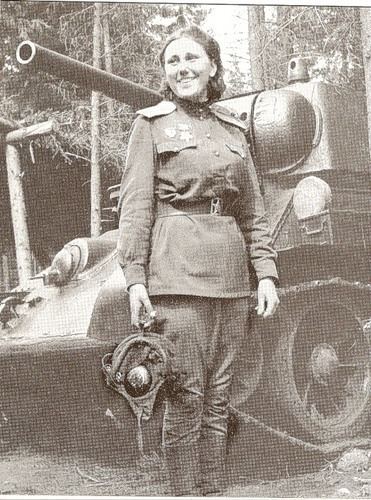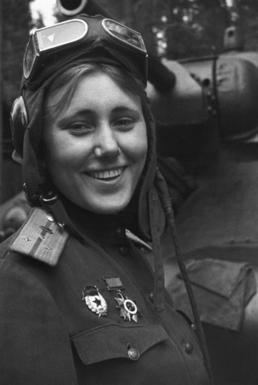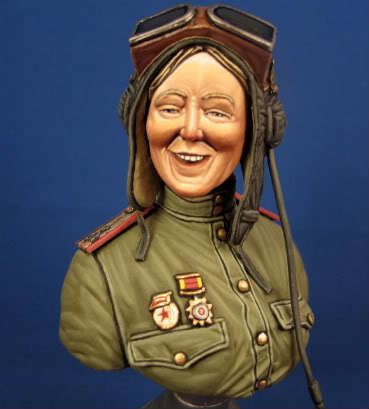Name Aleksandra Samusenko | Rank Guards Captain Years of service 1934—1945 Unit 1st Guards Tank Army | |
 | ||
Similar People Georgy Zhukov, Nikolai Fyodorovich Vatutin, Walter Model, Aleksandr Vasilevsky, Gunther von Kluge | ||
Aleksandra Grigoryevna Samusenko (Russian: Александра Григорьевна Самусенко, Ukrainian: Олександра Григорівна Самусенко; 1922, Chita – 3 March 1945) was a Soviet commander of the T-34 tank and a liaison officer during World War II. She was the only female tankman in the 1st Guards Tank Army.
Contents

Samusenko was awarded the Order of the Patriotic War 1st class and the Order of the Red Star, which she received for bravery in the Battle of Kursk.
Life
Samusenko began her tour of duty as a private in an infantry platoon. Later she successfully finished the tank academy. Samusenko received her Order of the Red Star when her tank crew defeated three German Tiger I tanks. Later Samusenko participated in the Lvov–Sandomierz Offensive.

World War II veteran and writer Fabian Garin, in his book Tsvety na tankakh (The Flowers on Tanks), mentions an episode from Samusenko's personal life, when a certain Mindlin, who fell in love with her, asked her "not to smoke and drink". Samusenko parried with "Maybe you have fallen in love?", kissed him on the head and stopped smoking and drinking thereafter.
US Army Sergeant Joseph Beyrle, who had escaped from Stalag III-C POW camp in Alt Drewitz in early January 1945, encountered Samusenko's tank brigade in the middle of January. Beyrle, one of only a few American soldiers known to have served with both the United States Army and the Soviet Army in World War II, was eventually able to persuade her to allow him to fight alongside the unit on its way to Berlin, thus beginning a month-long stint in a Soviet tank battalion where his demolitions expertise was appreciated. Beyrle, who said that Samusenko lost both her husband and entire family during the war, cited Samusenko as a symbol of the fortitude and courage displayed by the Soviet people during that period.
Samusenko died from wounds in the German village of Zülzefitz (70 km from Berlin) during the East Pomeranian Offensive. According to World War II veteran Pyotr Demidov, she was crushed under the tracks of a tank, whose operator(s) could not see the accompanying people in the darkness. She was buried in Łobez (Poland) near the monument to William I.
Spanish Civil War
In his 1975 book the Russian author Y.A. Zhukov wrote that Samusenko was a veteran of the Spanish Civil War and the Winter War, although Garin discounted this rumor in Tsvety na tankakh. According to Garin, it came from a certain soldier named Balandin, who told battalion commander Zhukov that Samusenko had fought in Spain:
My [Balandin's] submachine gunner Kolka... approached her and says: "[...] I saw you already under Huesca... ¡No pasarán!" And she replies: "I don't remember you" [...]
Zhukov then asked, why she concealed her service and Balandin replied that he did not know, "but for some reason many don't want to reveal that they fought in Spain". Garin, however, further cites Samusenko's boyfriend Mindlin, who later said that "she has never been there".
